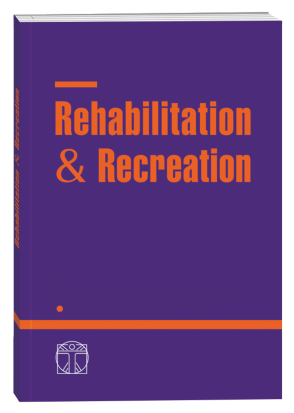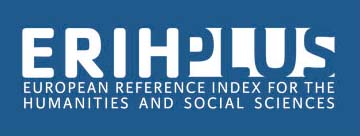ВПЛИВ ТЕРАПЕВТИЧНИХ ВПРАВ НА БУДОВУ ТІЛА ПАЦІЄНТІВ З ВІЛ-ПОЗИТИВНИМ СТАТУСОМ (ОГЛЯД ЛІТЕРАТУРИ)
DOI:
https://doi.org/10.32782/2522-1795.2022.11.4Ключові слова:
люди, що живуть з ВІЛ (ЛЖВ), ВІЛ/СНІД, терапевтичні вправи, будова тілаАнотація
У кількох дослідженнях повідомлялося про переваги фізичних вправ для дорослих з ВІЛ, хоча немає консенсусу щодо найбільш ефективних методів. Метою цього дослідження було визначити вплив різних видів терапевтичних вправ на будову тіла у пацієнтів з ВІЛ за допомогою систематичної стратегії пошуку рандомізованих контрольованих досліджень. Матеріал і методи. Пошук літературних джерел здійснили в базах даних PubMed, Cokranе Library, PEDro за 20002020 рр. Ми відібрали рандомізовані контрольовані дослідження, які вивчали вплив фізичних вправ на будову тіла, силу м’язів у дорослих пацієнтів з ВІЛ-позитивним статусом. Для оцінки методологічної якості використали шкалу PEdro. Для аналізу в даному огляді відібрано 15 рандомізованих контрольованих досліджень (РКД). Результати. У дослідженнях продемонстровано вплив терапевтичних вправ на будову тіла людей, що живуть з ВІЛ (ЛЖВ). Таким чином виявлено позитивний вплив на функціональні показники м’язової тканин, але досягнення були специфічними для різних видів терапевтичних вправ та їх поєднання. Тренування з опором в більшій мірі покращили результати, пов’язані з будовою тіла та силою м’язів. Аеробні тренування продемонстрували більший вплив на редукцію жирової тканини. Використання у тренувальній програмі поєднання силових та аеробних терапевтичних вправ позитивно впливало на усі показники, що вивчалися. Хоча триває дискусія щодо інтенсивності та тривалості комбінованих терапевтичних вправ для досягнення таких результатів. Висновки. Проаналізувавши результати нами було зроблено висновки, що застосування терапевтичних вправ у ЛЖВ можуть бути використані як додаткова складова у терапії цієї категорії пацієнтів. Виходячи з результатів видно, що силові вправи у порівнянні з йогою та аеробними вправами, мають найбільший вплив на будову тіла ЛЖВ. Вони збільшують розмір та масу м’язів, що свідчить про активацію анаболічних процесів Проте зміни є різними для кожного виду вправ у залежності від тривалості, інтенсивності та тренувального об’єму. Також цей огляд демонструє, що терапевтичні вправи вказують на сприятливі тенденції щодо перерозподілу жиру в організмі ЛЖВ. Ці дані є позитивними щодо можливості застосування терапевтичних вправ, як дієвого інструменту в боротьбі з ліподистрофією та перерозподілом жиру, на фоні прийому АРТ. При відсутності достатнього забезпечення та прихильності до препаратів для лікування ВІЛ/ СНІДу, терапевтичні є клінічно значущим та відносно безпечним немедикаментозним засобом лікування для підтримки функціональних можливостей ЛЖВ.
Посилання
Addis D. R., DeBerry J. J., & Aggarwal S. Chronic Pain in HIV. Molecular pain. 2020; 16. 1744806920927276. https://doi.org/10.1177/1744806920927276
Bedimo R. J., Adams-Huet B., Nguyen V., Moore-Matthews D., Poindexter J., & Maalouf N. M. Changes in bone microarchitecture with abacavir--lamivudine versus tenofovir disoproxil fumarate-emtricitabine in adults living with HIV. AIDS (London, England). 2020; 34 (11): 1687–1689. https://doi.org/10.1097/QAD.0000000000002592
Bowman E., & Funderburg N. T. Lipidome Abnormalities and Cardiovascular Disease Risk in HIV Infection. Current HIV/AIDS reports. 2019; 16 (3): 214–223. https://doi.org/10.1007/s11904-019-00442-9
Cade W. T., Reeds D. N., Mondy K. E., Overton E. T., Grassino J., Tucker S., Bopp C., Laciny E., Hubert S., Lassa-Claxton S., & Yarasheski K. E. Yoga lifestyle intervention reduces blood pressure in HIV-infected adults with cardiovascular disease risk factors. HIV medicine. 2010; 11 (6): 379–388. https://doi.org/10.1111/j.1468-1293.2009.00801.x
Cervero M., Torres R., Agud J. L., Alcázar V., Jusdado J. J., García-Lacalle C., & Moreno, S. Prevalence of and risk factors for low bone mineral density in Spanish treated HIV-infected patients. PloS one. 2018; 13 (4): e0196201. https://doi.org/10.1371/journal.pone.0196201
Chetty L., Cobbing S., & Chetty V. Physical Activity and Exercise for Older People Living with HIV: A Scoping Review. HIV/AIDS 2021; 13: 1079–1090. https://doi.org/10.2147/HIV. S336886
Delpino M. V., & Quarleri J. Influence of HIV Infection and Antiretroviral Therapy on Bone Homeostasis. Frontiers in endocrinology. 2020: 11: 502. https://doi.org/10.3389/fendo.2020.00502
Driscoll S. D., Meininger G. E., Ljungquist K., Hadigan C., Torriani M., Klibanski A., Frontera W. R., & Grinspoon S. Differential effects of metformin and exercise on muscle adiposity and metabolic indices in human immunodeficiency virus-infected patients. The Journal of clinical endocrinology and metabolism. 2004: 89 (5): 2171–2178. https://doi.org/10.1210/jc.2003-031858
Dolan S. E., Frontera W., Librizzi J., et al. Effects of a supervised home-based aerobic and progressive resistance training regimen in women infected with human immunodeficiency virus: a randomized trial. Arch Intern Med. 2006: 166 (11): 1225–1231. doi: 10.1001/archinte.166.11.1225
Dufour C. A., Marquine M. J., Fazeli P. L., Umlauf A., Henry B. L., Zlatar Z., Montoya J. L., Ellis R. J., Grant I., Moore D. J., & HIV Neurobehavioral Research Program Group. A Longitudinal Analysis of the Impact of Physical Activity on Neurocognitive Functioning Among HIV-Infected Adults. AIDS and behavior. 2018; 22 (5): 1562–1572. https://doi.org/10.1007/s10461-016-1643-z
Eisinger R. W., Dieffenbach C. W., & Fauci A. S. HIV Viral Load and Transmissibility of HIV Infection: Undetectable Equals Untransmittable. JAMA. 2019; 321 (5): 451–452. https://doi.org/10.1001/jama.2018.21167
Enichen E., Adams R. B., & Demmig-Adams B. Physical Activity as an Adjunct Treatment for People Living with HIV? American Journal of Lifestyle Medicine. 2022. https://doi.org/10.1177/15598276221078222
Erlandson K. M., MaWhinney S., Wilson M., Gross L., McCandless S. A., Campbell T. B., Kohrt W. M., Schwartz R., Brown T. T., & Jankowski C. M. Physical function improvements with moderate or high-intensity exercise among older adults with or without HIV infection. AIDS (London, England). 2018; 32 (16): 2317–2326. https://doi.org/10.1097/QAD.0000000000001984
Garcia A., Fraga G. A., Vieira R. C. Jr, Silva C. M., Trombeta J. C., Navalta J. W., Prestes J., & Voltarelli F. A. Effects of combined exercise training on immunological, physical and biochemical parameters in individuals with HIV/AIDS. Journal of sports sciences. 2014; 32 (8): 785–792. https://doi.org/10.1080/02640414.2013.858177
Grant P. M., Kitch D., McComsey G. A., Collier A. C., Bartali B., Koletar S. L., Erlandson K. M., Lake J. E., Yin M. T., Melbourne K., Ha B., & Brown T. T. Long-term body composition changes in antiretroviraltreated HIV-infected individuals. AIDS. 2016; 30 (18): 2805–2813. https://doi.org/10.1097/QAD.0000000000001248
Guariglia D. A., Pedro R. E., Deminice R., Rosa F. T., Peres S. B., & Franzói De Moraes S. M. Effect of combined training on body composition and metabolic variables in people living with HIV: A randomized clinical trial. Cytokine. 2018; 111: 505–510. https://doi.org/10.1016/j.cyto.2018.05.028
Ha T., Schensul S. L., Irving M., Brault M. A., Schensul J. J., Prabhughate P., & Vaz M. Depression Among Alcohol Consuming, HIV Positive Men on ART Treatment in India. AIDS and behavior. 2019; 23 (6): 1623–1633. https://doi.org/10.1007/s10461-018-2339-3
Hawkins K. L., Gordon K. S., Levin M. J., Weinberg A., Battaglia C., Rodriguez-Barradas M. C., Brown S. T., Rimland D., Justice A., Tate J., Erlandson K. M., & VACS Project Team. Herpes Zoster and Herpes Zoster Vaccine Rates Among Adults Living With and Without HIV in the Veterans Aging Cohort Study. Journal of acquired immune deficiency syndromes (1999). 2018; 79 (4): 527–533. https://doi.org/10.1097/QAI.0000000000001846
Ibeneme S. C., Irem F. O., Iloanusi N. I., Ezuma A. D., Ezenwankwo F. E., Okere P. C., Nnamani A. O., Ezeofor S. N., Dim N. R., & Fortwengel G. Impact of physical exercises on immune function, bone mineral density, and quality of life in people living with HIV/AIDS: a systematic review with meta-analysis. BMC infectious diseases. 2019; 19 (1): 340. https://doi.org/10.1186/s12879-019-3916-4
Jaggers J. R., Sneed J. M., Lobelo R. L., Hand G. A., Dudgeon W. D., Prasad V. K., Burgess S., & Blair S. N. Results of a nine month home-based physical activity intervention for people living with HIV. International Journal of Clinical Trials. 2016; 3: 106–119.
Kessing C. F., Nixon C. C., Li C., Tsai P., Takata H., Mousseau G., Ho P. T., Honeycutt J. B., Fallahi M., Trautmann L., Garcia J. V., & Valente S. T. In Vivo Suppression of HIV Rebound by Didehydro-Cortistatin A, a «Blockand-Lock» Strategy for HIV-1 Treatment. Cell reports. 2017; 21 (3): 600–611. https://doi.org/10.1016/j.celrep.2017.09.080
Lakicevic N., Gentile, A., Mehrabi S., Cassar S., Parker K., Roklicer R., Bianco A., & Drid P. Make Fitness Fun: Could Novelty Be the Key Determinant for Physical Activity Adherence?. Frontiers in psychology. 2020; 11: 577522. https://doi.org/10.3389/fpsyg.2020.577522
Lindegaard B., Hansen T., Hvid T., van Hall G., Plomgaard P., Ditlevsen S., Gerstoft J., & Pedersen B. K. The effect of strength and endurance training on insulin sensitivity and fat distribution in human immunodeficiency virusinfected patients with lipodystrophy. The Journal of clinical endocrinology and metabolism. 2008; 93 (10): 3860–3869. https://doi.org/10.1210/jc.2007-2733
Mabweazara S. Z., Leach L. L., Ley C., & Smith M. A six week contextualised physical activity intervention for women living with HIV and AIDS of low socioeconomic status: a pilot study. AIDS care. 2018; 30 (2): 61–65. https://doi.org/10.1080/09540121.2018.1470309
Mangona L., Daca T., Tchonga F., Bule O., Bhatt N., Jani I., Damasceno A., & Prista A. Effect of Different Types of Exercise in HIV + Mozambican Women Using Antiretroviral Therapy. The open AIDS journal. 2015; 9: 89–95. https://doi.org/10.2174/1874613601509010089
Master P., & Macedo R. Effects of dietary supplementation in sport and exercise: a review of evidence on milk proteins and amino acids. Critical reviews in food science and nutrition. 2021; 61 (7): 1225–1239. https://doi.org/10.1080/10408398.2020.1756216
Mutimura E., Crowther N. J., Cade T. W., Yarasheski K. E., & Stewart A. Exercise training reduces central adiposity and improves metabolic indices in HAART-treated HIV-positive subjects in Rwanda: a randomized controlled trial. AIDS research and human retroviruses. 2008; 24 (1): 15–23. https://doi.org/10.1089/aid.2007.0023
Odunaiya N. A., Agbaje S. A., Adegoke O. M., & Oguntibeju O. O. Effects of a four-week aerobic exercise programme on depression, anxiety and general self-efficacy in people living with HIV on highly active antiretroviral therapy. AIDS care. 2022; 34 (2): 173–181. https://doi.org/10.1080/09540121.2021.1883513
Ogalha C., Luz E., Sampaio E., Souza R., Zarife A., Neto M. G., Netto E., & Brites C. A randomized, clinical trial to evaluate the impact of regular physical activity on the quality of life, body morphology and metabolic parameters of patients with AIDS in Salvador, Brazil. Journal of acquired immune deficiency syndromes (1999). 2011; 57 (3): 179–185. https://doi.org/10.1097/QAI.0b013e31821e9bca
Oliveira V., Rosa F. T., Santos J. C., Wiechmann S. L., Narciso A., Franzoi de Moraes S. M., Webel A. R., & Deminice R. Effects of a Combined Exercise Training Program on Health Indicators and Quality of Life of People Living with HIV: A Randomized Clinical Trial. AIDS and behavior. 2020; 24 (5): 1531–1541. https://doi.org/10.1007/s10461-019-02678-3
Oursler K. K., Sorkin J. D., Ryan A. S., & Katzel L. I. A pilot randomized aerobic exercise trial in older HIV-infected men: Insights into strategies for successful aging with HIV. PloS one. 2018; 13 (6). e0198855. https://doi.org/10.1371/journal.pone.0198855
Pérez Chaparro C., Zech P., Schuch F., Wolfarth B., Rapp M., & Heiβel A. Effects of aerobic and resistance exercise alone or combined on strength and hormone outcomes for people living with HIV. A meta-analysis. PloS one. 2018; 13 (9). e0203384. https://doi.org/10.1371/journal.pone.0203384
Pramukti I., Lindayani L., Chen Y. C., Yeh C. Y., Tai T. W., Fetzer S., & Ko N. Y. Bone fracture among people living with HIV: A systematic review and meta-regression of prevalence, incidence, and risk factors. PloS one. 2020; 15 (6). e0233501. https://doi.org/10.1371/journal.pone.0233501
Sakkas G. K., Mulligan K., Dasilva M., Doyle J. W., Khatami H., Schleich T., Kent-Braun J. A., & Schambelan M. Creatine fails to augment the benefits from resistance training in patients with HIV infection: a randomized, double-blind, placebo-controlled study. PloS one. 2009; 4 (2). e4605. https://doi.org/10.1371/journal.pone.0004605
Solomon P., Carusone S. C., Davis A. M., Aubry R., & O’Brien K. K. Experiences of People Living With HIV in Community Based Exercise: A Qualitative Longitudinal Study. Journal of the International Association of Providers of AIDS Care. 2021; 20. 2325958221995344.https://doi.org/10.1177/2325958221995344
Vancampfort D., Mugisha J., De Hert M., Probst M., Firth J., Gorczynski P., & Stubbs B. Global physical activity levels among people living with HIV: a systematic review and meta-analysis. Disability and rehabilitation. 2018; 40 (4): 388–397. https://doi.org/10.1080/09638288.2016.1260645
Vingren J. L., Curtis J. H., Levitt D. E., Duplanty A. A., Lee E. C., McFarlin B. K., & Hill D. W. Adding Resistance Training to the Standard of Care for Inpatient Substance Abuse Treatment in Men With Human Immunodeficiency Virus Improves Skeletal Muscle Health Without Altering Cytokine Concentrations. Journal of strength and conditioning research. 2018; 32 (1); 76–82. https://doi.org/10.1519/JSC.0000000000002289
Zanetti H. R., da Cruz L. G., Lourenço C. L., Neves F. F., Silva-Vergara M. L., & Mendes E. L. Does nonlinear resistance training reduce metabolic syndrome in people living with HIV? A randomized clinical trial.The Journal of sports medicine and physical fitness. 2017; 57 (5): 678–684. https://doi.org/10.23736/S0022-4707.16.06294-0
Zanetti H. R., da Cruz L. G., Lourenço C. L., Ribeiro G. C., Ferreira de Jesus Leite M. A., Neves F. F., Silva-Vergara M. L., & Mendes E. L. Nonlinear Resistance Training Enhances the Lipid Profile and Reduces Inflammation Marker in People Living With HIV: A Randomized Clinical Trial. Journal of physical activity & health. 2016; 13 (7): 765–770. https://doi.org/10.1123/jpah.2015-0540
Zech P., Schuch F., Pérez-Chaparro C., Kangas M., Rapp M., & Heissel A. Exercise, Comorbidities, and Health-Related Quality of Life in People Living with HIV: The HIBES Cohort Study. International journal of environmental research and public health. 2020; 17 (14): 5138. https://doi.org/10.3390/ijerph17145138
##submission.downloads##
Опубліковано
Як цитувати
Номер
Розділ
Ліцензія

Ця робота ліцензується відповідно до Creative Commons Attribution-NonCommercial-NoDerivatives 4.0 International License.












